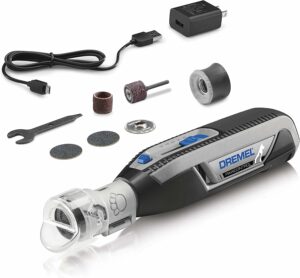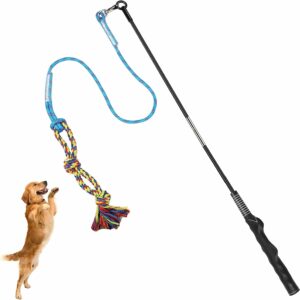If you’re a dog owner, you probably know how important it is to keep your dog’s nails trimmed. Long nails can cause a variety of problems for your dog, such as pain, infection, injury and difficulty walking. But what if your dog hates having their nails clipped?
Or what if you’re afraid of hurting your dog or cutting the quick? Don’t worry, there are other ways to take care of your dog’s nails without using clippers.
In this article, we’ll explore some clip-free nail care options that can help you and your dog enjoy a stress-free grooming experience.
Why Nail Care Is Important for Your Dog
Dog nail care is not just a cosmetic issue—it’s a vital part of your dog’s health and well-being. Here are some reasons why nail care is important for your dog.
- Long nails can change your dog’s posture and gait, putting extra pressure on his joints and muscles. This can lead to arthritis, lameness and other orthopedic problems.
- Long nails can curl under and dig into your dog’s paw pads, causing pain, infection and difficulty walking.
- Long nails can split or crack, exposing the sensitive quick and causing bleeding and inflammation.
- Long nails can scratch you, your furniture, your floors and other pets.
- Long nails can interfere with your dog’s ability to grip and balance on different surfaces, making them more prone to slipping and falling.
Risks of Clipping Your Dog’s Nails
Dr. Jerry Klein, from AKC suggests, “If you’ve never clipped a dog’s nails before, you may want to have your veterinarian or vet tech give you a lesson on how to do it.”
Clipping your dog’s nails may seem like a simple and straightforward task, but it’s not without risks. Here are some potential problems that can arise from clipping your dog’s nails.
- Clipping too close to the quick can cause pain, bleeding and trauma to your dog. The quick is the part of the nail that contains blood vessels and nerves. It’s easy to see on light-colored nails, but hard to see on dark-colored nails. If you accidentally cut the quick, you’ll need to apply pressure and styptic powder to stop the bleeding and prevent infection.
- Clipping too often or too much can damage the nail bed and cause the quick to grow longer. This can make it harder to trim your dog’s nails in the future and increase the risk of cutting the quick.
- Clipping with dull or poor-quality clippers can cause jagged edges, splintering or crushing of the nail. This can hurt your dog and make their nails more susceptible to breaking or tearing.
- Clipping without proper restraint or training can cause stress, fear and anxiety for your dog. Some dogs may struggle, bite or run away when they see the clippers. This can make nail trimming a frustrating and unpleasant experience for both you and your dog.
Clip-Free Nail Care Alternatives
If clipping is not an option for you or your dog, don’t worry. There are other ways to keep your dog’s nails short and healthy without using clippers. Here are some clip-free nail care options that you can try.
Dremel Tool
A Dremel tool is an electric file that can be used to smooth out the rough edges of your dog’s nails. It works by rotating a sanding drum or disc at high speed and gently grinding away the excess nail material.
The Dremel can be more precise, gentle and quiet than clippers, and it can reduce the risk of splitting or cracking the nails. It can also help you avoid cutting the quick by allowing you to see the nail layers more clearly.
To use a Dremel tool, you will need to choose the right attachment for your dog’s nail size and hardness. You will also need to hold your dog’s paw firmly but gently and expose one nail at a time. You will then touch the nail lightly with the Dremel tool and move it back and forth along the edge of the nail until it is smooth and rounded.
You should avoid holding the tool on one spot for too long as it can overheat the nail and cause pain or damage. You should also reward your dog with treats and praise throughout the process to make it a positive experience.
Emery Board or Nail File
An emery board or nail file is a manual file that can be used to remove the hard, sharp edges of your dog’s nails. It works by rubbing a rough surface against the nail and scraping off the excess material. An emery board or nail file can be inexpensive, easy to use and less intimidating than clippers or electric tools. It can also help you shape your dog’s nails more naturally and prevent them from snagging on carpets or furniture.
To use an emery board or nail file, you will need to choose the right size and texture for your dog’s nails. You will also need to hold your dog’s paw firmly but gently and expose one nail at a time. You will then file the nail in one direction only, from the tip to the base, until it is smooth and short enough.
You should check for signs of discomfort or irritation on your dog’s nails or paws as you file and stop if you notice any. You should also let your dog walk on carpeted surfaces after filing to smooth out any roughness.
Exercise
Exercise can help keep your dog’s nails short and healthy by wearing them down naturally on hard surfaces. When your dog walks, runs, hikes or plays fetch on concrete, asphalt, gravel or other rough surfaces, their nails get rubbed and filed by the friction and pressure.
Exercise can be free, fun and beneficial for your dog’s physical and mental well-being. It can also help you bond with your dog and enjoy some quality time together.
To use exercise as a nail care alternative, you will need to choose appropriate surfaces that are not too rough or abrasive for your dog’s paws. You will also need to monitor your dog’s paw pads for any injuries or infections that may result from contact with the ground.
You should also supplement exercise with other methods if needed, as some dogs may have nails that grow faster than they wear down, or nails that do not touch the ground at all, such as the dewclaws.
Some activities that we recommend for using exercise as a nail care alternative are walking, running, hiking or playing fetch with your dog. You can choose the duration, intensity and frequency of these activities depending on your dog’s age, breed, size and health. You can also vary the locations and routes of these activities to keep your dog interested and stimulated.
How To Choose the Best Clip-Free Nail Care Method for Your Dog
The best clip-free nail care method for your dog depends on several factors, such as:
- Personality and preferences. Some dogs may be more comfortable with one method over. For example, some dogs may enjoy the sensation of grinding, while others may find it scary or annoying. You’ll need to observe your dog’s reactions and behaviors to find out what works best for him.
- Nail type and condition. Some dogs have different types of nails that may require different methods of care. For example, some dogs have thick or curved nails that may be harder to trim with clippers. Some dogs have brittle or sensitive nails that may be prone to cracking or bleeding. You’ll need to inspect your dog’s nails regularly and consult your vet if you notice any problems or abnormalities.
- Your budget. Some methods may be more expensive or require more maintenance than others. For example, grinding may require buying a special tool and replacing the heads frequently. Filing may require buying multiple files or boards and replacing them when they wear out. Walking may require finding suitable places and times to take your dog out. You’ll need to consider how much money and time you’re willing to spend on your dog’s nail care.
Final Thoughts
Nail care is an important part of your dog’s health and well-being, but it doesn’t have to involve clipping. There are other ways to keep your dog’s nails short and happy without using clippers, such as grinding, filing, and walking.
These methods have their own pros and cons, so you’ll need to find out what works best for you and your dog. The key is to make nail care a positive and rewarding experience for both of you, by using treats, toys, praise, affection, distractions, consistency and patience.







